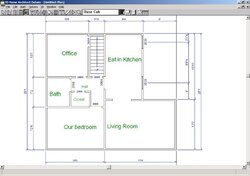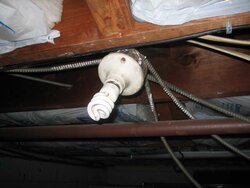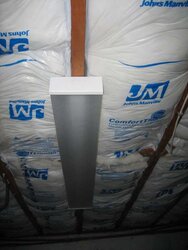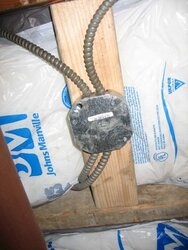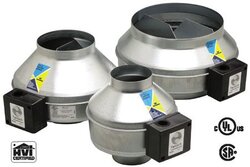Our house is a 1.5 story, 750 sq. ft. first floor not including closets and stairwells, with the garage underneath the living room (NOT INSULATED, but working on it) and the basement underneath the rest of the house also not insulated at all, but unfortunately it's finished so there is no easy way to put up insulation. I think part of our problem is the floors throughout the house are VERY COLD. It's 45F in the basement.
We have a central hot air furnace in the attic which was not heating the house very well. I think it is because the vents are in the ceiling and hot air doesn't sink very well. The furnace does a great job of heating the attic though, which is of course frustrating because the attic would be warmer than the first floor, and the attic/first floor are insulated between each other. What I'm saying is I don't believe the heat is rising through the ceiling of the first floor. (Case in point, with only the Rinnai on, the attic is freezing.)
I did a lot of research and decided to buy a Rinnai 556WTA gas heater. People seem to love these things and they are pretty efficient (84% AFUE, but I do not believe you can truly compare 84% AFUE to 80% AFUE on a central furnace when the central furnace is heating the entire attic just from heat loss on the appliance itself, possibly ductwork). I put it in the office at the opposite end of the doorway so it's blowing out of the door. It's 22k BTU and does a great job of heating up the office (it's 80F in here right now) but it does not get too far beyond the hallway, maybe our bedroom. In retrospect I probably would have been off with two of the 11k units for units (for practically the same price) and put one in the living room and one here.
Right now we have just the Rinnai running but I am going to have to hook the furnace back up because it's so cold in the living room (60F). We originally wanted to put it in there and while it sure would have made the room warm, the unit is not very attractive. I guess I am trying to figure out what else we can do with a very limited budget. How limited? I guess it depends on the effect. Putting another small Rinnai heater in the living room will be about $1000 but again, not very attractive. (I really want a wood burning stove but that is being veto'ed).
We will be insulating the floor of the living room (ceiling of garage) but not sure how much that will help.
A gas cast iron stove would be almost as efficient as the Rinnai and attractive, but sounds like probably at least $2000 there.
Thank you in advance for suggestions
We have a central hot air furnace in the attic which was not heating the house very well. I think it is because the vents are in the ceiling and hot air doesn't sink very well. The furnace does a great job of heating the attic though, which is of course frustrating because the attic would be warmer than the first floor, and the attic/first floor are insulated between each other. What I'm saying is I don't believe the heat is rising through the ceiling of the first floor. (Case in point, with only the Rinnai on, the attic is freezing.)
I did a lot of research and decided to buy a Rinnai 556WTA gas heater. People seem to love these things and they are pretty efficient (84% AFUE, but I do not believe you can truly compare 84% AFUE to 80% AFUE on a central furnace when the central furnace is heating the entire attic just from heat loss on the appliance itself, possibly ductwork). I put it in the office at the opposite end of the doorway so it's blowing out of the door. It's 22k BTU and does a great job of heating up the office (it's 80F in here right now) but it does not get too far beyond the hallway, maybe our bedroom. In retrospect I probably would have been off with two of the 11k units for units (for practically the same price) and put one in the living room and one here.
Right now we have just the Rinnai running but I am going to have to hook the furnace back up because it's so cold in the living room (60F). We originally wanted to put it in there and while it sure would have made the room warm, the unit is not very attractive. I guess I am trying to figure out what else we can do with a very limited budget. How limited? I guess it depends on the effect. Putting another small Rinnai heater in the living room will be about $1000 but again, not very attractive. (I really want a wood burning stove but that is being veto'ed).
We will be insulating the floor of the living room (ceiling of garage) but not sure how much that will help.
A gas cast iron stove would be almost as efficient as the Rinnai and attractive, but sounds like probably at least $2000 there.
Thank you in advance for suggestions



